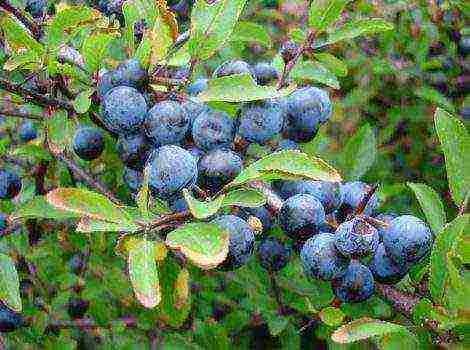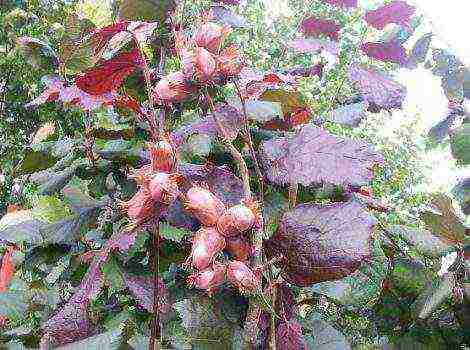Content
Planting and caring for columnar pears
All summer residents want to see a variety of fruit trees in their garden area. But what to do when the territory is small and you need to distribute it as rationally as possible? In this case, columnar trees are an excellent solution.
Description and history of selection of columnar pears
Breeder Kachalkin bred columnar pears. The main differences from other types are:
- small size;
- great fruitfulness.
By the way, despite the fact that in all the descriptions it is a dwarf tree, its height in individual cases can reach 2 meters.
Columnar pears are of two types:
- natural (from seedlings);
- vaccinated.
The trunk of a columnar pear is larger than that of the fruit trees we are used to. And branches with fruits are along the entire length of the trunk. Excess twigs are removed without difficulty.
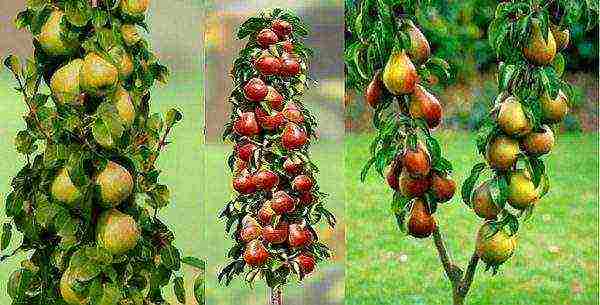
Columnar pear varieties
Sapphire... The first fruit bears in 3 years. Fruit can be harvested in September. The peculiarities of the fruit are considered to be an elongated shape and a greenish-pink hue. Pears, as a rule, are large, the weight of one reaches 250 g. Sapphire does not like frost, so storage in the basement will not work for her. Cultivation in the suburbs is possible.
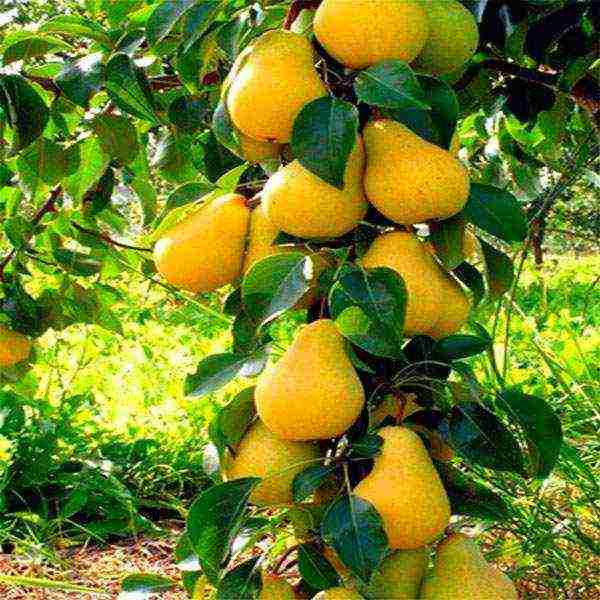
Carmen... The fruits ripen very quickly and are ready for harvesting in the summer. Ripe pears of bright burgundy color and very large, about 300 g. Sweet.
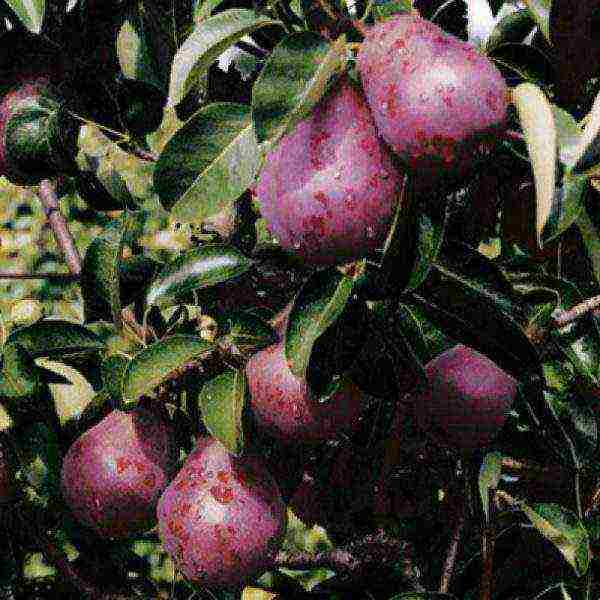
Tenderness... This variety belongs to the autumn. Fruit weight in the middle, up to 150g. Features: egg-shaped, deep green color. The pulp is juicy and tender, sourish on the palate.
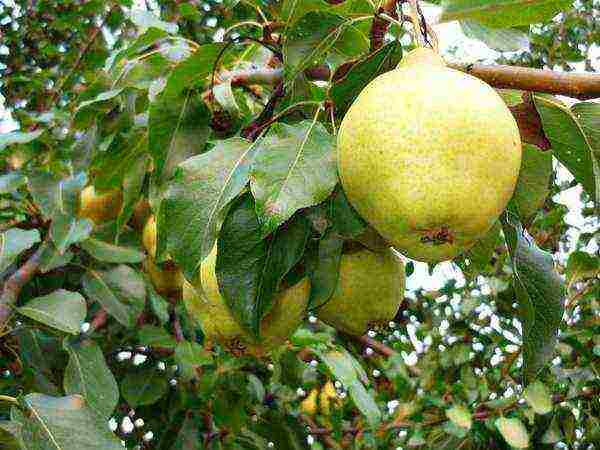
G-2... The fruits ripen at the end of November. Fruits are of a standard pear-like shape and lumpy. The color is green-pink. Pears smell good and are sweet enough.
Decor... Fruiting in late summer, early autumn. The first pears can be obtained in the 2nd year after planting. The fruits are yellow, oval in shape.
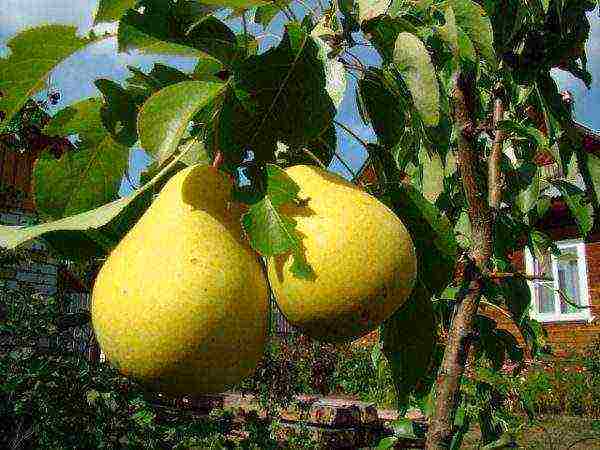
D-4. The harvest is brought in 3 years. Autumn grade. Pears are deep yellow; in the sun they can get a pink tint.
Honey. The fruits ripen in summer, by mid-August. The fruits are yellow-green in color. One of the largest, the weight of one pear reaches 400 g. The taste is very sweet and juicy, the pulp with a pleasant light aroma.
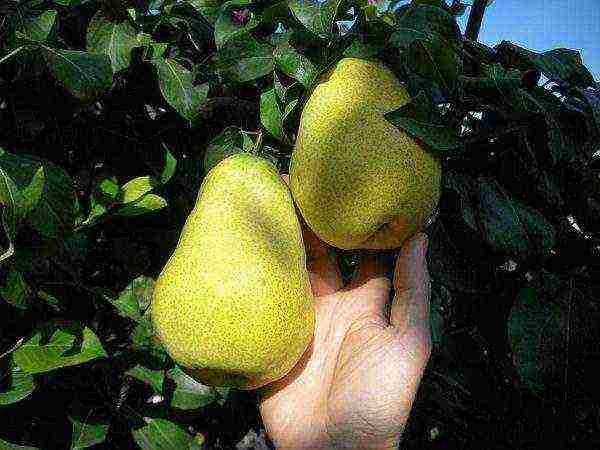
G-3... The variety can be harvested in September-October. Fruits are of normal pear shape, but wide and lumpy. The skin is bright yellow, very juicy. Like honey, large - 400 g. The variety easily survives frosts.
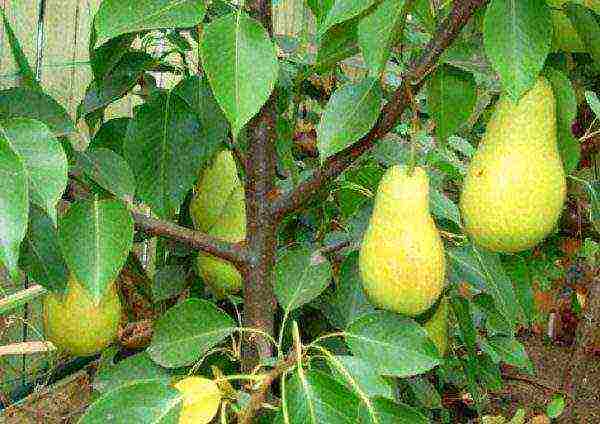
Knight Werth. The first fruits can be obtained 2 years after planting. The pears are large and pink. It survives normally in frosts down to -20 degrees.
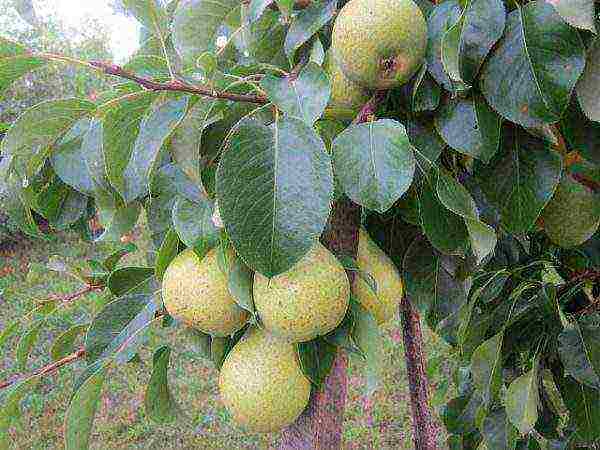
Pavlovskaya. Fruits appear in the 2nd year, in October. The fruits are large, sweet and juicy. The peel is thin, yellow-pink in color.
D-5. I ripen in August - September. Outwardly yellow, the weight reaches 250 g, the pulp is sweet and sour and juicy. Disease resistant and frost tolerant.
Sunremy. Fruiting in October-November. The main feature is the delicate and sweet taste of the fruit. They are fragrant and large, weighing more than 400 g. They do not require special care and survive the winters without difficulties.
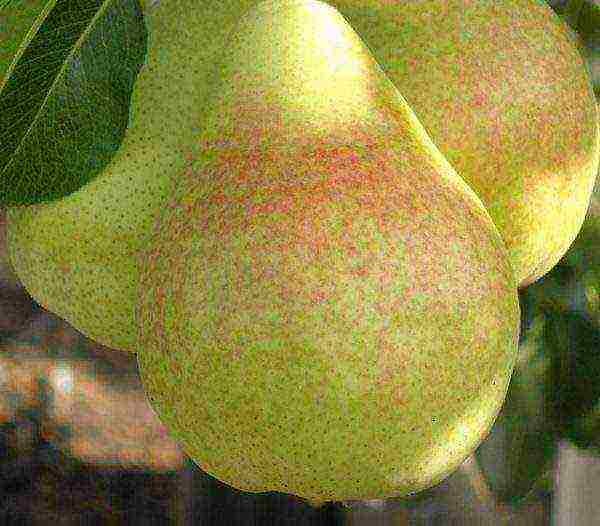
Favorite of Yakovlev. Fruits in September, sometimes in early October. Fruits are medium in size, about 200-250 years. Wide pear-shaped. The skin is thick and dense, the color is dull green with a tint of yellow. The pulp is sweet with a delicate quince aroma.
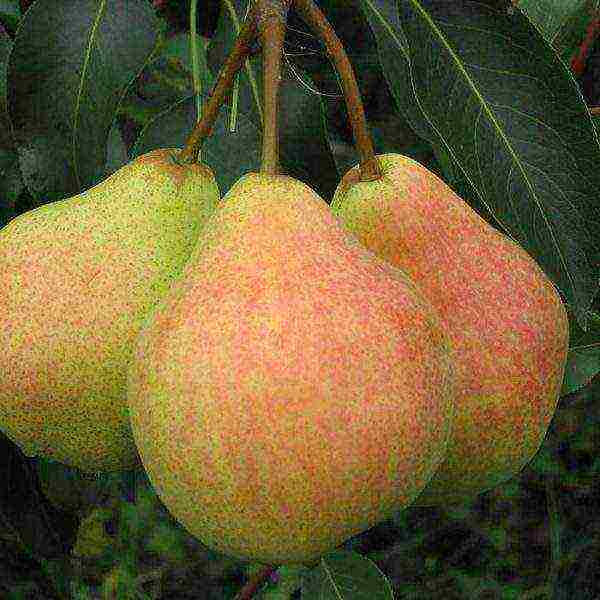
Advantages and disadvantages
First, consider the advantages of planting columnar pears on the site.
- Small size. The trees are very compact and do not take up much space, even in the smallest garden.
- Early maturity... In the second year, after planting, you can get a full-fledged harvest, and not wait 4-5 years as in the case of an ordinary pear.
- Variety... There are many varieties. Their variety makes it possible to choose exactly the one that will take root and will bear fruit in each, separate region.
- Transportability of fruits. Due to its small size, all the fruits can be reached with your hands and harvest the entire crop, and not leave the crowns to be eaten by birds.
- Fertility.
Despite the list of pluses, columnar pears have their own minuses.
- Short lifespan... With normal care, such a tree can live up to 10 years.
- Care... It requires more care than a regular pear. You need to be careful about fertilizers and other organic matter.
Landing
Initially, before planting, it is necessary to properly prepare the soil. A large pit is pulled out, up to 80 cm deep and 0.5 m wide. 20 liters of water are poured into it. You have to wait until the liquid is completely absorbed. After that, we add a composition of: potassium sulfate, sand, superphosphate and humus.
We fill half of the hole with this mixture. We put a seedling and cover it with soil. Seal the tree well.
Disembarkation takes place either in April-May, or in September-October. The seedlings require a lot of water immediately after planting. Therefore, you need to water 3-4 times a week. The first fertilization must be carried out even before the leaves appear, each other at an interval of 3 weeks.
The roots of columnar pears are, as a rule, close to the surface, do not forget about this when you work the soil around the tree.
Also, in addition to a seedling, a columnar pear can be obtained by grafting. This method also gives excellent results. The fruits become many times larger and much faster, but the vitality of the tree is spent twice as fast. If you take good care of the grafted tree, then flowering will be in a year, and the first fruits can be obtained in two.
Below we offer you to watch a short video, which says how to plant a columnar pear correctly:
Grooming and pruning
Unfortunately, proper care of seedlings requires both material and time costs. But in 2-3 years all expenses will be compensated by a good harvest.
Do not neglect pruning a columnar pear. If the trees are cut correctly, then in a year they grow by 10-12 cm. And in addition to growing upward, 3-4 new branches grow.
If in the second year you notice that the tree is well rooted and grows normally, then leave 4-5 fruits on it. Further, increase the number of fruits every year. Keep track of the size and number of fruits annually, because the fruit load for each variety and each individual tree is individual. For example, if last year there were more pears, then the tree is overloaded and the number of fruits needs to be normalized.
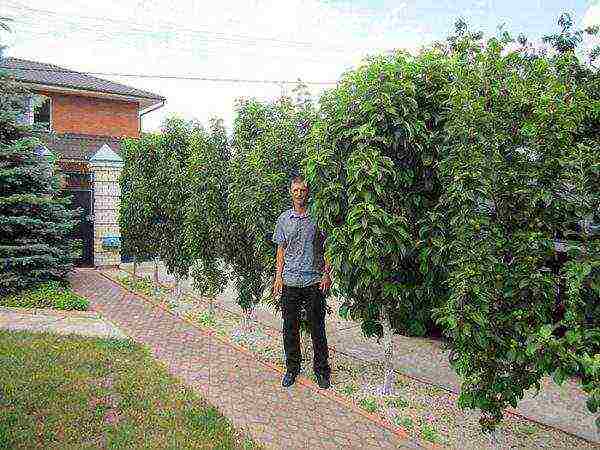
To obtain the expected yield, the trees must be fertilized regularly. It's important to do it at the right time. According to the rule, feeding takes place throughout the spring and summer. It is best to use chicken manure and slurry as fertilizer, urea or saltpeter is also suitable. The first feeding takes place in the spring, after the appearance of the first leaves, the second after a two-week pause, and the third, after 4 weeks, after the first.
Proper preparation for winter is a serious step. Of course, columnar pears are frost-resistant, but young seedlings require additional care. It is necessary to build a protection from improvised materials, make sure that it is dry and that a mouse or any other rodent does not get inside. You can leave needles inside or cover with straw.
Susceptibility to disease and pests
The main problem for the columnar pear is the fruit gall midge. When it appears, the shoots gradually darken, the ovary dries up and falls off. Umbrella and greenish aphids can also damage the tree. As a result of the appearance of a white scab, a white sediment begins to appear on the leaves. Then they dry up and fall off.
Reproduction
The best and easiest option to propagate a columnar pear is to plant ready-made seedlings. Also, it can be grown from seeds or by cuttings. Seeds are rarely used, since the method is time-consuming.
Green cuttings are required for grafting.
- Initially, cuttings are cut. They must have more than five sheets.
- For a couple of days, the cuttings are impregnated with a root-forming solution.
- Sprinkle the stalk with soil.
- If it has taken root, it will grow rapidly.
A very popular and easy method for propagating pears is grafting. Gardeners comment that the tree grows much better in this way than in other options. An ordinary pear can act as a stock.
All fruits of columnar pears are distinguished by their special taste and delicate aroma.... They can be stored for a long time, and the tree itself is not afraid of frost. Providing pears with the care they need will result in a good harvest. In addition to their practical properties, columnar pears can be an excellent addition to design, for example, serve as a hedge or an original decoration.
